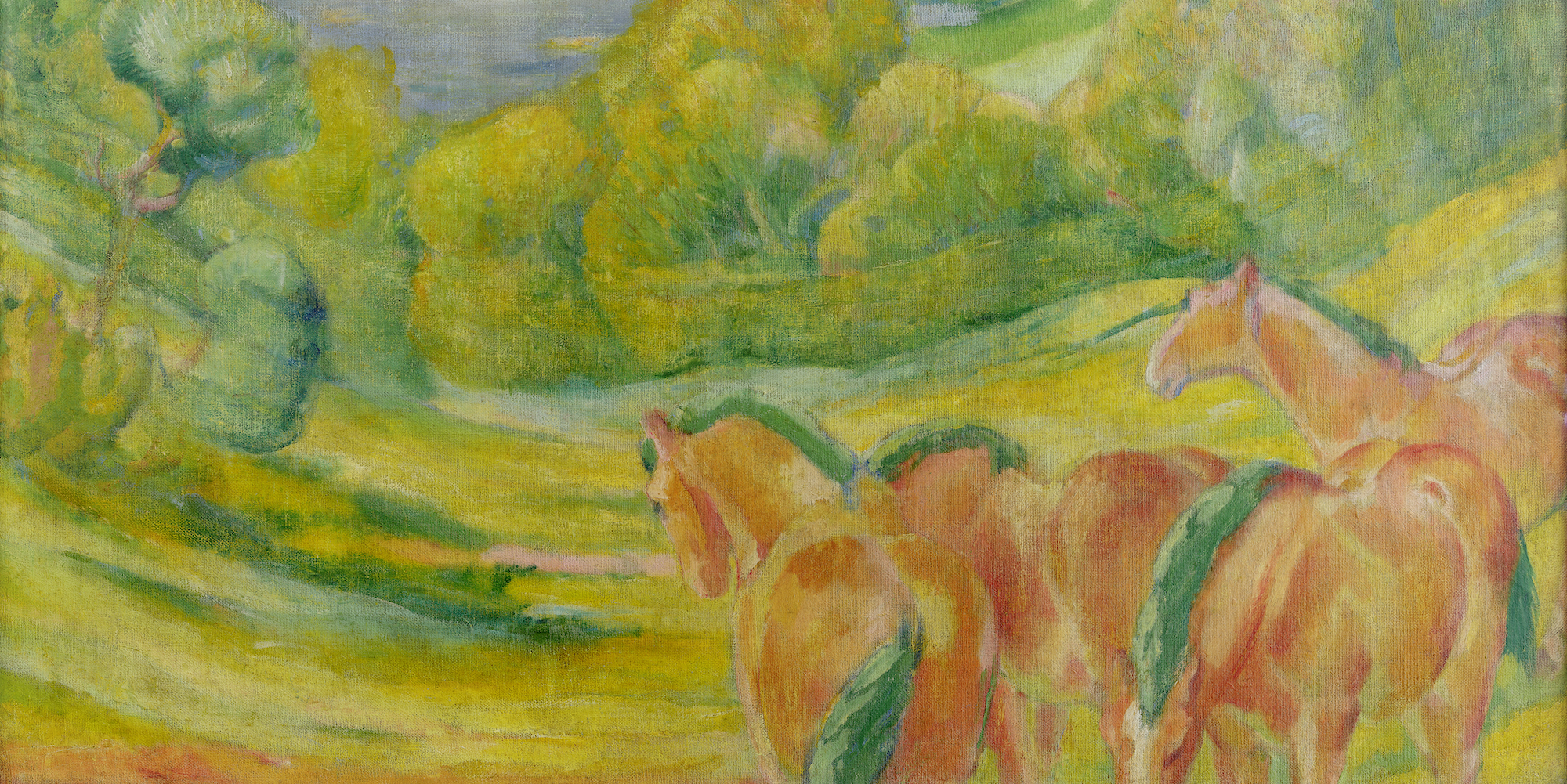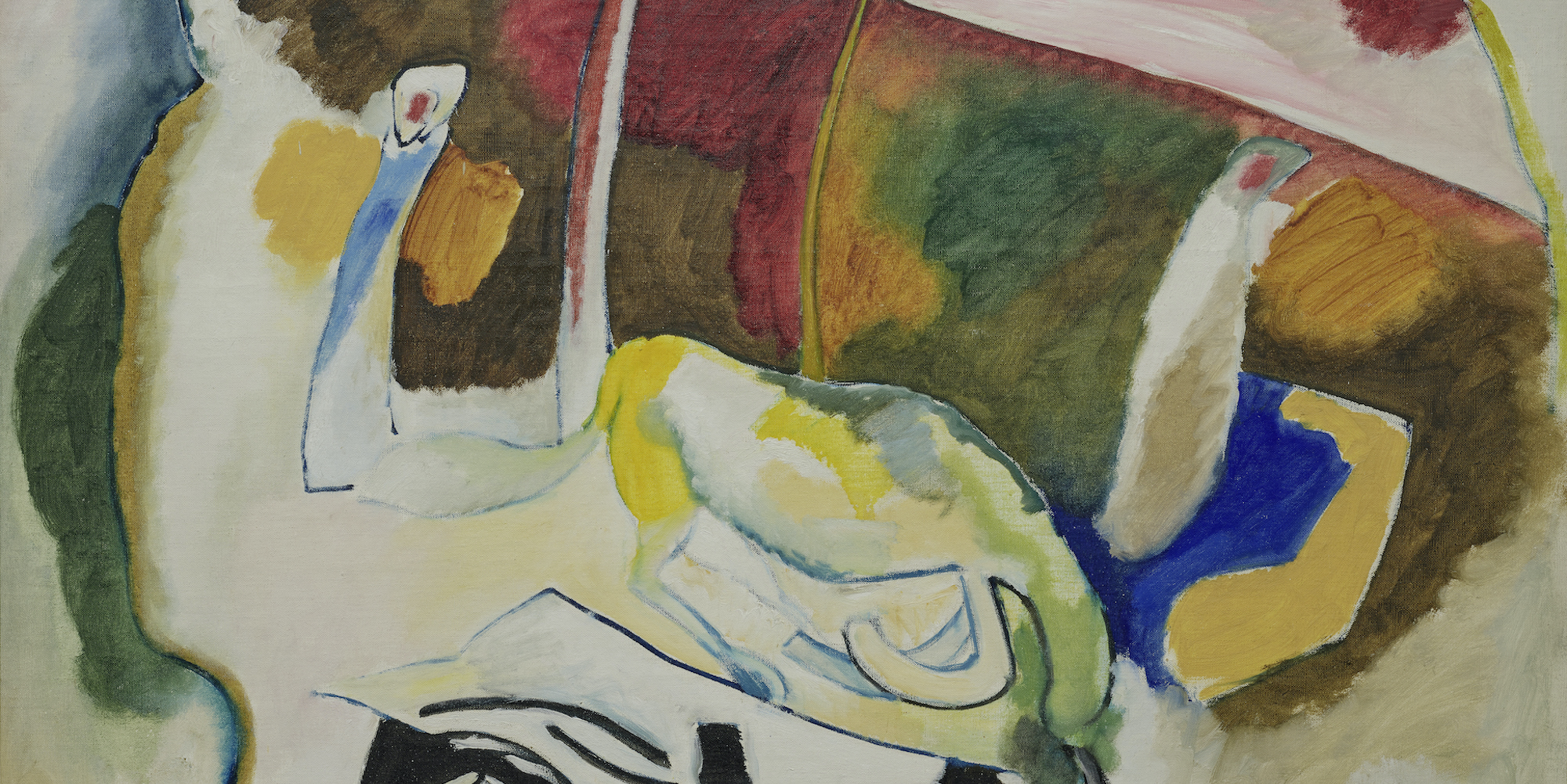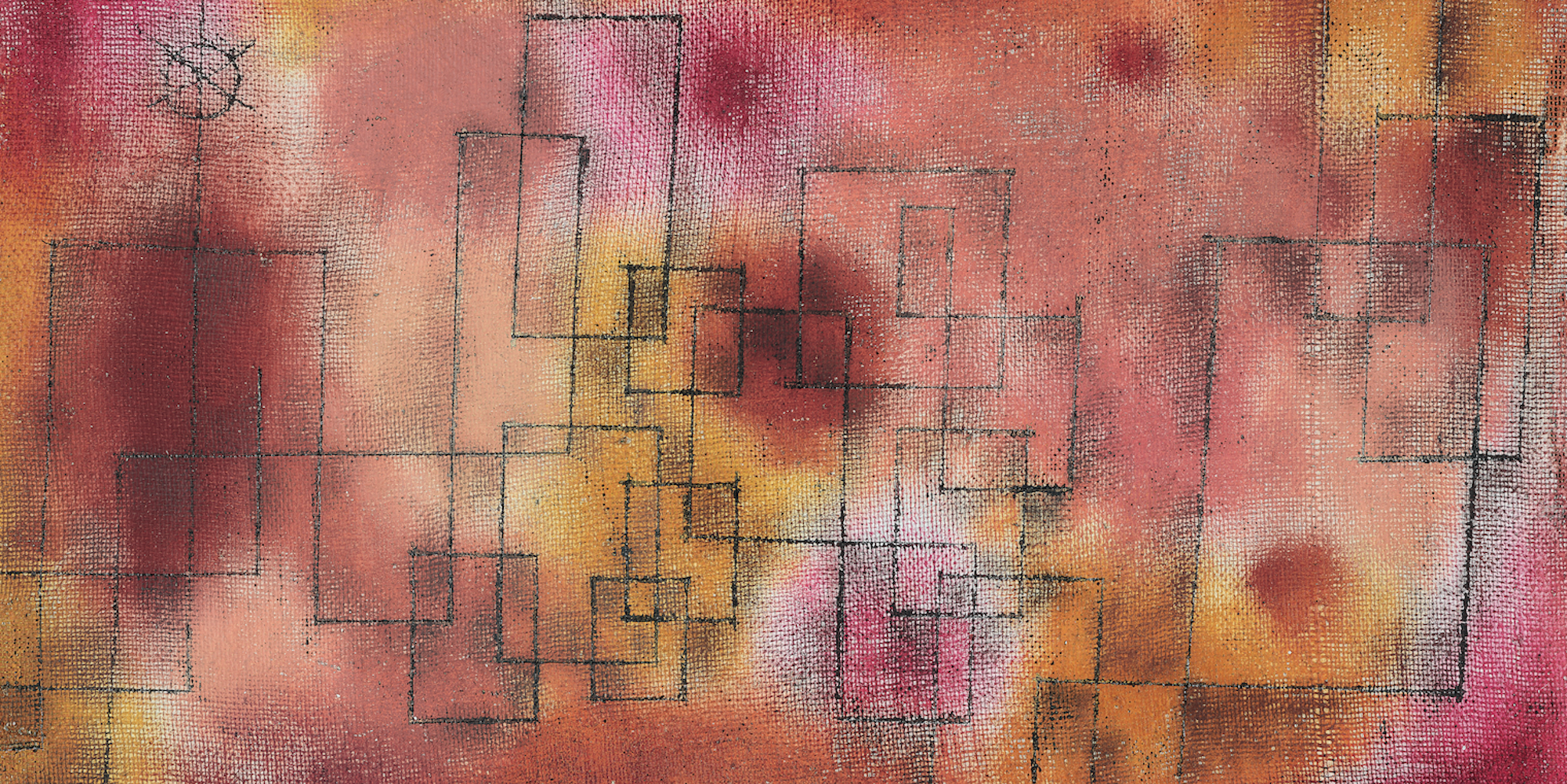

With the opening of the new building in 2008, the collection of the Franz Marc Museum that originally focussed exclusively on the works of Franz Marc and the ‘Blauer Reiter’ artists, was expanded to include the Expressionist works of the ‘Brücke’ (Bridge) and German post-war abstraction. As a result, the museum not only provides an overview of the two avant-garde movements in Germany before World War I but also traces the continuation of these artistic paths, cut short by the Nazi era and the ‘degenerate art’ campaign, and showcases abstract painting in Germany after World War II as well.
The origin of the holdings stem from a private collection. A large proportion of the exhibits date back to Rudolf Ibach who continued to acquire Expressionist works into the 1920s. His daughter, Etta, who married the Munich gallery owner Otto Stangl, added to the collection together with her husband up until the 1980s. As a result, the museum now also has an important number of works by Horst Antes.
In the Expressionist section, the collection not only boasts a number of major paintings but also has an extenisve holding of works on paper, including Franz Marc’s first sketches for the Tower of Blue Horses, early coloured woodcut prints by Erich Heckel, spontaneous sketches by Ernst Ludwig Kirchner, watercolours by Oskar Kokoschka and pen-and-ink drawings by Ludwig Meidner.
The unique appeal of the collection, that is continuously being expanded with important permanent loans from private collections, can be found in these major individual works which deepen and broaden one’s view of Expressionism.
Franz Marc, Leaping Horse, 1912
Franz Marc Museum,
Etta and Otto Stangl Foundation
Photo: www.collecto.art

The collection of the Franz Marc Museums comprises several hundred works by Franz Marc. They represent the artist’s œuvre in a breadth and variety that is to be found in virtually no other museum.
In addition to important paintings such as Large Landscape (1910), Haystacks in the Snow (1910), Leaping Horse (1912), Donkey Frieze (1912) and Small Abstract Composition IV (1914), the collection includes more than 60 sheets from sketch books with pencil drawings and watercolours that allow Marc’s artistic development to be traced step by step. The museum also owns almost all printed work by the artist with all the printing blocks of his woodcuts and a large selection of his sculptures, including drafts in wax and individual works in stone. The numerous, large-format works on paper and the small, spontaneously painted oil sketches of around 1906/07 are also of importance.
Changing presentations of the holdings allow visitors to discover Franz Marc not only as an empathetic painter of animals but also as an important representative of the Expressionist avant-garde.
Franz Marc, Große Landschaft I, 1910,
Franz Marc Museum, Etta und Otto Stangl Foundation, Photo: www.collecto.art

The formation of the ‘Blauer Reiter’ (Blue Rider) group of artists between Murnau, Sindelsdorf and Kochel reflected the ‘spirit of departure’ that united the artists involved. In the countryside south of Munich they sought the primordial, unspoilt natural state before modern civilisation that they missed in the city and the academic art scene. Artists associated with the ‘Blauer Reiter’ Almanac strove to give things their true colours and shapes and to capture their essence instead of merely painting their external appearance.
As a result paintings were created with intensive colours incorporating a new sense of space, following rules that were unfamiliar to contemporaries. In addition to the works of Franz Marc, Cemetery Crosses and Winter Landscape by Gabriele Münter, Café on the Lake by August Macke, Alexej von Jawlensky’s painting Woman in a Red Blouse and Wassily Kandinsky’s St.George and Improvisation 21 are testimonies to this. These masterpieces are supplemented by works on paper by the artists as well as decorative art objects and reverse glass paintings that reflect their interest in folk art.
Wassily Kandinsky, Improvisation 21, 1911
Franz Marc Museum
Permanent loan, courtesy of W. Wittrock, Berlin
Photo: Collecto.art

The ‘Brücke’ (Bridge), founded in 1905 in Dresden, is the second most important avant-garde movement in Germany after the ‘Blauer Reiter’. The Franz Marc Museum owns several important paintings by Ernst Ludwig Kirchner (Blue Artistes and Tennis Players, 1912), Erich Heckel (Park Lake, 1912), Karl Schmidt-Rottluff (Houses on the Lake, 1911) and Emil Nolde (Girl in the Garden, 1915). In addition to paintings, works on paper by the ‘Brücke’ artists are prominent in the large holdings of drawings, watercolours and prints, a field in which the will for spontaneous, emotional expression is particularly evident. This also applies to artists associated with the ‘Brücke’ circle such as Christian Rohlfs, Oskar Kokoschka, Else Lasker-Schüler, Lovis Corinth and Paula Modersohn-Becker, who are all represented in the collection. Their freshness, spontaneity and brilliant colouration still intensively convey the ‘spirit of departure’ and quest for a new beginning.
Erich Heckel, Parksee (Park Lake), 1914
Franz Marc Museum
On permanent loan from a private collection
Photo: www.collecto.art

Like the other ‘Blauer Reiter’ artists Paul Klee sought to surmount outer appearances in his painting in order to reveal essential, underlying structures. As a result of the abstract leaning in his pictures, Klee created a merely associative connection with reality, underlined by the enigmatic, poetic titles of his works.
The range of Paul Klee’s œuvre is represented in the Franz Marc Museum by a number of major exhibits. The core of these dates to Rudolf Ibach, one of the most important collectors of Klee’s works. He owned one of the most famous watercolours painted during Klee’s journey to Tunisia, View of Kairuan (1914), as well as one of Klee’s first oil paintings, Tropical Garden (1919). The time the aritst spent at the Bauhaus is also well represented with Planned Buildings (1922), Uncomposed in Space (1929) and Double Tower (1923).
In 1933 Paul Klee was forced by the Nazi regime in Germany to relinquish his position as professor at the Arts Academy in Düsseldorf and to go into exile abroad. He returned to his native Bern where his impressive late works were created. These are represented in the Franz Marc Museum by A Tragedian (1933) and Alpine Forest (1936).
Paul Klee, Geplante Bauten (Planned Buildings), 1922,
Franz Marc Museum
On permanent loan from a private collection
Photo: www.collecto.art

In 1949 seven abstract artists joined forces at the Galerie Stangl in Munich to form the group ‘ZEN 49’: Willi Baumeister, Rolf Cavael, Gerhard Fietz, Rupprecht Geiger, Willi Hempel, Brigitte Meier-Denninghoff and Fritz Winter. Guests were regularly invited to participate in the exhibitions they held. These included Max Ackermann, Julius Bissier, Karl Otto Götz, Hans Hartung, Ernst Wilhelm Nay, Emil Schumacher, K.R.H. Sonderborg, Pierre Soulages, Fred Thieler, Theodor Werner and Serge Poliakoff.
All these artists are represented in the Franz Marc Museum with paintings, drawings, watercolours and prints. Of particular note are the large number of works by Willi Baumeister and Serge Poliakoff, the two large-format paintings by Pierre Soulages and an important group of works by Fritz Winter that also includes two of his pictures Driving Forces of the Earth.
‘ZEN 49’ highlights the importance of the gallery after the war in Munich. It was an intellectual centre and a surrogate museum, a meeting place for collectors and critics, artists and curators. Etta and Otto Stangl championed abstract painting although the ‘Blauer Reiter’ always remained fundamental to their understanding of contemporary art.
Serge Poliakoff, Komposition in Weinrot (Composition in Wine-Red), n.d.
Franz Marc Museum
On permanent loan from a private collection
Photo: www.collecto.art